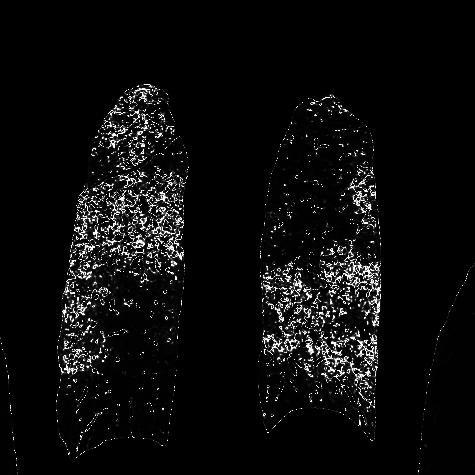
Summary
Skills:
![]()
![]()
![]()
Ground-glass Feature
Ground-glass opacities (GGOs) appear as light gray patches on thoracic CT images, often associated with COVID-19 infections. These patches can indicate lung damage or conditions like pneumonia. Developing a computer vision algorithm to visualize and quantify the extent of GGOs helps clinicians assess disease severity.
Segmentation in MATLAB
In our approach to assist clinicians in identifying GGOs, we employ image segmentation techniques, such as the "fuzzy k-means" clustering algorithm. Fuzzy k-means is an advanced clustering algorithm that categorizes data points into specific groups. Unlike traditional K-means, it allows for partial memberships, accommodating uncertainties. Each cluster is represented by a centroid, and data points contribute with varying degrees of "fuzzy" membership.
We apply the algorithm to cluster pixel intensities in a CT image. For example, we define intensity ranges representing background/lung tissue, GGO, and body/blood vessels. This allows for partial membership, accommodating pixels with mixed characteristics. The segmented image highlights GGO features.
While our method effectively identifies GGOs, minor errors may occur due to improper pixel range definitions or varying brightness in CT scans. Future work involves exploring additional image processing techniques to address these challenges.


Patient 1 - Segmentation vs. CT


Patient 2 - Segmentation vs. CT

